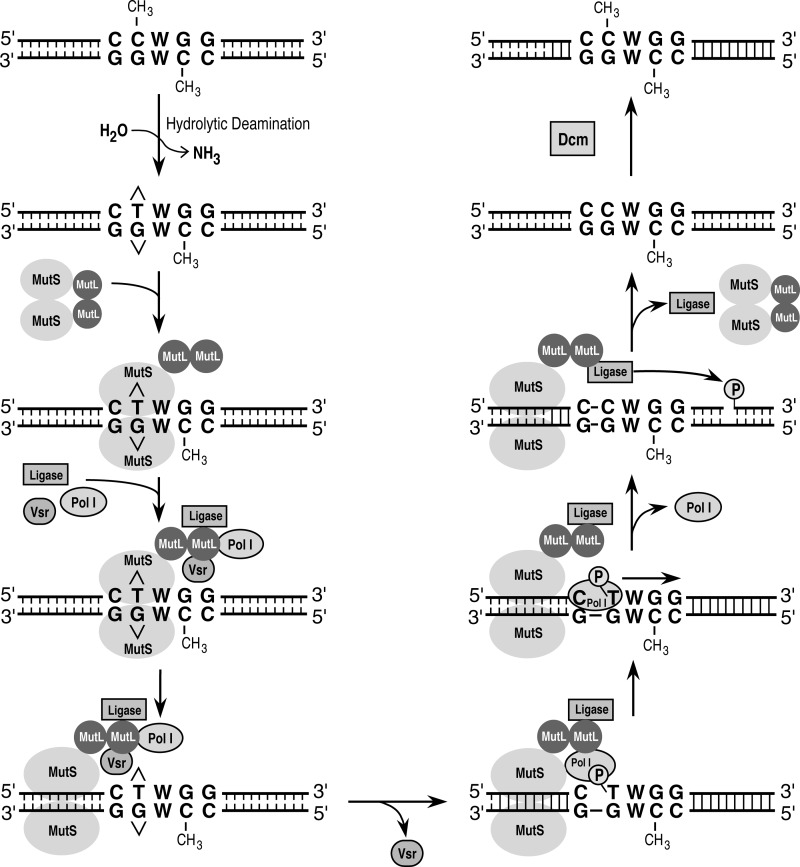FIGURE 8.
A model for VSP repair. A T:G mismatch is generated by the spontaneous hydrolytic deamination of a 5-methyl cytosine residue. MutS and MutL are recruited to the T:G mismatched base, presumably through the interaction of MutS with the mismatch. MutS and MutL then recruit the Vsr endonuclease, DNA ligase I, and DNA polymerase I, effectively increasing the local concentration of each of the proteins. A physical interaction between MutL and the Vsr endonuclease has been demonstrated (24, 35); other protein-protein interactions, if they exist, are hypothetical. The Vsr endonuclease catalyzes the hydrolysis of a phosphodiester bond 5′ to the mismatched thymidine. DNA polymerase I is then loaded onto the nick and undergoes nick translates to repair the mismatch and synthesize a short repair patch. DNA ligase I seals the nick to restore the integrity of the DNA strand, and the Dcm methyltransferase methylates the appropriate cytosine on the newly synthesized repair patch.

